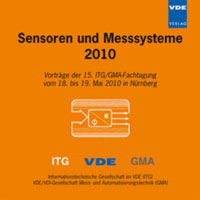Use of the QCM for the Study of Colloidal Dispersions and Particulate Adsorbates
Conference: Sensoren und Messsysteme 2010 - 15. ITG/GMA-Fachtagung
05/18/2010 - 05/19/2010 at Nürnberg
Proceedings: Sensoren und Messsysteme 2010
Pages: 8Language: germanTyp: PDF
Personal VDE Members are entitled to a 10% discount on this title
Authors:
Johannsmann, Diethelm (Institute of Physical Chemistry, Clausthal University of Technology, Arnold-Sommerfeld-Str. 4, 38678 Clausthal-Zellerfeld, Germany)
Abstract:
Acoustic sensors are well established tools for the determination of film thickness. The talk covers more complicated samples, namely colloidal particles. Although simplifying models exist, these are typically too crude to describe realistic situations. Finite Element Method (FEM) calculations, on the other hand, do provide such predictions. The frequency shift, Δ f, may be either negative or positive. The sensor response depends on the stiffness of the contact between the particle and the sensor surface. Because the stress is high at the points of contact, there are strong nonlinear effects. The dependence of Δ f and Δ Γ (Γ the bandwidth, equivalent to dissipation) on amplitude opens a new dimension for sensing. There even may be particle-induced acoustic streaming above a thickness shear device. In special situations, dielectric properties of the sample are accessible, as well. The quartz crystal microbalance can be used to do high-frequency electrochemical impedance spectroscopy (EIS).


